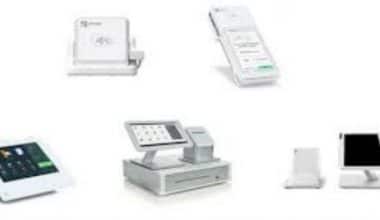How should I begin an email? Which is preferable, using a person’s first or last name? Does “Dear Sir or Madam” still apply? Should you even bother to say hello? Remember the influence of email salutations. Your email’s subject line establishes the tone of your communication, shapes how the recipient sees you, and may even determine whether they read your message or immediately delete it. Read on to learn examples of professional email greetings and ways to not start an email.
Email Greetings Examples
Context is everything when it comes to email greetings. What works for your friends may not work for a large corporation interview. Hence, for your coworkers, what is respectful and courteous to your university lecturer may come across as rigid and out-of-date. To choose the right email greeting, respond to the following questions:
- Is this letter intended for one person or a group? You can address each receiver by name if there are just one to three recipients. Use general salutations like “Hello everyone” or “Hello team” when speaking to larger groups of individuals.
- What kind of connection do I have with a recipient? How well-versed in this person are you? What degree of formality do you observe between you?
The best email greetings, both personalized and generic, may be found here. Your greatest option is a salutation that is specific to you. Always try to find out someone’s name when you’re emailing someone you don’t know. You can complete this work with the aid of their corporate website or LinkedIn profile. A standard email salutation can support you if your research was unsuccessful. Thus, below are some examples of email greetings:
#1. Hello [Name]
This is one of the best examples of email greetings except for the most formal situations.
#2. Good day [Name]
To make your email greeting a little more formal, you might substitute “Hello” for “Hi.” This greeting falls between between the friendly “Hi” and the formal “Dear.”
#3. Hi [Name]
This is one of the examples of email greetings that is more official to begin a business email. “Dear” is okay for an opening email, but if you add it to every message in a lengthy email chain, it could look formal and monotonous. You can substitute “Hello” in the following emails.
#4. Dear [last name], Mr./Ms., Dr./Professor
Use “Dear,” followed by an honorary or a title, a person’s last name, and a formal salutation when addressing a respectable person in an email. For instance, “Dear Professor Green” or “Dear Mr. Smith.” Instead of a comma following the salutation, you might use a colon for the most official correspondence.
#5. Greetings
This is also one of the examples of email greetings. The phrase “greetings” is appropriate if you don’t know the person’s name. However, we firmly advise you to personalize your salutation and learn the recipient’s name.
#6. Hello there
When you’re unsure of a recipient’s name, you can use it instead of “Greetings.” Just remember that informally written emails might not call for a “Hi there” greeting.
#7. Hello everyone
Lastly, this is one of the examples of email greetings. When you are writing to a group of people, this email salutation is effective. However, you can address each recipient by name if there are just three or fewer recipients. For instance, “Hi Sandy, Tom, Mark,” .
Avoid These Email Salutations
Below are some of the email salutations to avoid:
#1. Hey!
Such a greeting has no place in business communications. Just leave your friends and close acquaintances with this greeting.
#2. Yo!
Would you welcome a partnership request or business proposal addressed to you as “Yo”? Your receiver also agrees.
#3. Hello, [Nickname]
Do not assume that Jessica will respond to you if you address your letter to her as Jess. Likewise, if she ends with Jess, you should address her in that manner as well.
#4. Greetings, Sir/Madam
This greeting is considerably too formal, similar to “To Whom It May Concern.” Additionally, it is rather generic. This kind of email greeting shows that you didn’t do enough research to find out who the recipient is.
#5. Greetings, [Job title]
This greeting is more precise than “To Whom It May Concern” and “Dear Sir or Madam.” Regardless, a “Dear Hiring Manager” won’t be pleased that you didn’t go the extra mile to learn their name.
#6. Good day/afternoon!
Such pleasantries should be avoided, especially if you’re emailing someone in a foreign time zone because you never know when they will get your message.
#7. Wrong or Incorrect name
Verify someone’s name twice before emailing them. It’s better to start a conversation with a general salutation like “Hi there” if you’re unsure how to spell a name. Compared to sending an email with a typo, this causes much less damage.
#8. No salutation
Even though it can be hard to choose the right email greeting, that doesn’t mean you should skip it. It’s rude to omit the salutation from a business email because it’s an important component.
Professional Email Greetings
The proper professional email greetings include:
#1. Hello [Name]
The salutation used in this email is acceptable for professional email greetings. When you wish to show respect for the receiver, you usually use it in cover letters, formal business letters, and other forms of communication.
Even though titles like “Mr.” and “Mrs.” were historically common, they run the danger of misrepresenting gender or assuming the reader is married. Use “Dear Sam” or “Dear Sam Barney” instead.
#2. Salutation
A casual “Hi,” followed by a comma, is a good way to start most work-related emails. Consider using the salutation “Hello” if a somewhat more official tone is desired. Although this greeting is seen as informal, it also has a plain and cordial tone.
#3. Hello Everyone, Hello Team or Good Day Team, [Department Name]
This is one of the professional email greetings. Here, you have a few alternatives when sending an email to two or more people. The informal yet appropriate ways to address a group of individuals are “hello everyone,” “hello team,” or “hello [department name] team.”
Additionally, they refrain from addressing a group of people with pronouns like “Hello ladies,” “Hello guys,” or “Gentlemen,” as these pronouns may not appropriately describe the recipients.
#4. I Hope Your Week Is Going Well or That Your Weekend Was Enjoyable
This is also one of the best professional email greetings because you thank your reader right away. They also establish a nice rapport with a coworker you already know or wish to do business with.
#5. I’m Writing to You Regarding
It’s courteous and forthright to start an email with “I’m reaching out concerning…” because it makes the communication’s goal clear. Since hundreds of emails are sent in a single business day, this method shows that you care about the other person’s time by being brief.
Declaring your intentions also helps to eliminate misunderstandings or ambiguity about what you need from the reader.
#6. Thanks for
Lastly, this is one of the best professional email greetings. Gratitude is another approach to prioritizing the reader. Workplace teamwork is improved when you let the person know right away that your email is in response to his or her email or action.
Ways to Not Start an Email
The greetings and opening sentences below have a formal tone and, in some cases, give the impression that the person is not thinking. Avoid using these words if you want to come across as sincere and thoughtful. Thus, ways to not start an email include:
#1. To Whom It May Concern
This is one of the ways to not start an email. Despite the fact that “To whom it may concern” appears to be a formal greeting, it’s impersonal and overused. It implies that you didn’t care to make sure your receiver is who you think they are or whether your message is relevant to them.
The “Dear Sir or Madam” email salutation falls under this as well. The gender-binary greeting is out of date and can be seen as exclusive in this situation.
#2. Hello [Missed Name]
Verify the spelling of the recipient’s name before using it in an email salutation. Typos happen, but writing someone’s name incorrectly raises suspicion that your communication was hastily written without care or attention to detail.
#3. Dear, [Insert Name Here]
Both misspelling a recipient’s name in an email greeting and completely neglecting to enter their name into a prewritten template should be avoided. Attempting to captivate your reader by using an email template without any personalization is probably useless. Always double-check that you have replaced any placeholders in the salutation with the recipient’s correctly spelled name if you must use a templated message for efficiency.
#4. Would You Mind Helping Me?
This is also one of the ways to not start an email. An introductory line like “Can you do me a favor?” can sound abrupt and self-serving when you are emailing someone for the first time and don’t know them. Instead, think of an email subject line like “I’m reaching out because…” that succinctly communicates the issue you’re hoping to fix with their help.
#5. I Understand That You Are Busy, But
At best, this email’s introduction suggests that the reader’s time is valuable. At worst, it implies that even though you are aware of it, you still deserve their attention. No matter how well you know the reader, you should skip this opening statement and instead give a short explanation of why your message is important.
#6. Allow Me to Give You My Name
When emailing someone for the first time, this email opener is frequently utilized. It’s like narrating your own introduction when you start an email with “Let me introduce myself.” Would you say this to someone out loud? Although it seems definitive, it ultimately wastes time. Focus on the chase.
Email Greetings to a Group
If you’re not used to it, addressing numerous people in an email may feel odd. You can choose from a selection of email greeting templates. The templates that are included in the list below can be modified to better fit your needs. They include:
#1. When Greeting Two to Four Individuals
In an email, you should address two recipients differently than you would a group of 15. It is OK to address each person directly when speaking to two or four persons (Instructional Solutions suggests it may be as many as five people), as shown below.
- Greetings, Thomas and Shawna
- Hello Ms. Rivera
- Hello, Ms. Smith
- Greetings, Mr. Thompson
- Hallo Thomas, Fay, Len, Shawna
So, if you don’t know the genders of the people you’re writing to, you can also use their full names and avoid gendered titles. It’s best not to guess gender from names.
#2. Speaking to a Specific Team
If you are sending an email to a group of people who are all on the same team, you should address them as such in your salutation. When deciding which of the following to use, keep in mind that your tone will express how serious or essential the contents are.
- Hello, Sales Team
- Greetings, team.
- Staff at FOH, please
#3. Use Names Whenever You Can
Even though you are writing to a large group of people, it is disrespectful to address a letter to “Mr. Burns and company” or “Deborah Smith and coworkers.” So, if you are speaking to a group of people, do so collectively. Also, if you need to draw attention to one person’s work and contributions in particular, mention their name in the email’s body.
#4. Hard Copies With Several Addresses
If you want to send physical letters to two different people, you should type in the first address, leave a blank line, and then type in the second address. Making the recipient’s address the top address of each letter is appropriate while doing this.
How Do You Start an Email Politely?
- Hi [Name]
- Hello, please.
- Hello everyone Team or [department name] team, hello.
What Is the Best Greeting Sentence to Start an Email?
- I hope you are well and reading my email.
- I hope this week has started off well for you.
- Good day, afternoon, or evening.
- I hope your week is off to a good start.
- I appreciate your prompt response.
- We appreciate you getting in contact with us.
- I’d be interested in your opinion on.
- To whom I’m writing.
What Are Some Formal Greetings?
Formal Salutations:
- Hello!
- I’m here.
- Happy morning.
- Hello, midday.
- Good night.
- I’m glad to have met you.
- It’s nice to meet you.
What Is Opening Line in Email?
The finest email subject line is a line that grabs the reader’s interest and compels them to read on. I hope you’re having a nice day, for instance, is a good example of an email beginning line.
What Is a Good Opening Sentence?
Consider it this way: a good first sentence is the thing you want to say even though you don’t think you can say it.
References
- smallbusiness.chron.com
- mail.com
- grammarly.com
- sparkmailapp.com
Related Articles
- VIRTUAL PHONE SYSTEMS: The Top Best Virtual Phone Systems For any Business (+ Detailed Guide)
- TO WHOM IT MAY CONCERN: All You Should Know!!!
- 15+ Big Grants Available For Small Businesses
- Good Customer Service: Best improvement strategies (+free samples)
- OFFICIAL LETTER FORMAT: What are the Best Formats for Any Business




